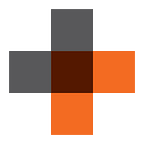Tech Trends to Watch from CES
The start of the new year is often made even more inspiring by the Consumer Electronics Show in Las Vegas. The team at Fahrenheit 212 logged thousands of steps walking the various showrooms. This year, we noticed four key trends that are shaping the technology landscape:
- Big Data has moved from theory to practice. It has become a part of everyday lives, from eating, sleeping, to even how we brush our teeth. But extracting valuable insight is still an emerging discipline.
- The glamour of wearables has started to “wear” off in a sea-of-same. The true promise beyond fitness tracking has yet to be actualized.
- Drones are here, big and small. Most notably, their applications are going beyond being a high quality selfie stick.
- Virtual Reality is ready for game-time. It’s about to transform the gaming experience, though we couldn’t help but consider the other potential applications it could transform.
Big Data focuses on the little data
Data collection capabilities are being integrated into everyday products — and based on the displays at CES — it is going to continue to be further merged into our daily lives. Hygiene, sleep, and eating are just a few of the things that data is attempting to optimize.
With 16 sensors and the ability to take 4,000 temperature readings in just two seconds, the Withings Thermo is reimagining the thermometer. While the thermometer’s simple display only shows current temperature, behind the scenes it is collecting data to track things like progression of your fever to get you back on the mend.
Philips Sonicare uses data from toothbrush habits to improve the pearly whites of our children. The Bluetooth-connected Sonic toothbrush connects to the Philips Sonicare for Kids app that is dedicated to monitoring and motivating dental hygiene.
Sleep Number showed how the bed could improve your rest. The connected IT bed features biometric sensors that measure heart rate, breathing rate, and restfulness. The companion app learns patterns over time and makes suggestions on best bedtimes and optimal Sleep Number setting.
Spün is a food utensil entrant in the smart device field. With the ability to decipher the caloric content of your meal, it has the ability to count each calorie you eat and politely suggest when you should slow down.
Wearables grow in number, but they still need to evolve
Wearables have been seen as the trend about to hit the mainstream. This year, it felt more like a field of clones. In an overly-crowded sector, we saw many overlapping features and few actual consumer challenges addressed outside of health and wellness. The innovation imperative for those entering the wearables space will be to find a truly addressable consumer challenge.
A great example of innovation beyond the wrist is Under Armour. They created a fitness tracking ecosystem for athletes. The connected Healthbox ecosystem includes a wristband, heart rate monitor, scale, shoes, and earphones devised to improve and track fitness.
Drones take off
Drones are appearing in all shapes and sizes and their purposes are growing. Still in the early days, the future possibilities for drones are starting to come to light. Tasks such as monitoring weather and agricultural development could foreseeably be disrupted with autonomous drones.
Aimed at flying safely is the Fleye, a drone wrapped in impact-resistant plastic. Constructed to be sturdy and weighing in at about a pound, it is less likely to inflict any damage in-flight.
Ehang’s drone promises to save you on cab fare. The autonomous 184 drone has seating for one, flies as fast as 62 mph and can fly for up to 24 minutes.
Virtual Reality shows new dimensions
Although it has immediate implications on video gaming, VR has also shown it can expand into other meaningful areas. CES featured applications for health, wellness, travel, and entertainment.
Youvisit believes that a lifetime is too short to explore the world. Their technology allows you to take a hike in South America, explore Paris, or even take a catwalk view of Fashion Week.
Vivid Vision uses Virtual Reality Vision Therapy to train lazy eyes to work harder. By showing brighter objects to the lazy eye, it forces the brain to focus on using the eye more.
